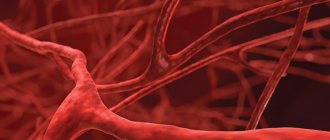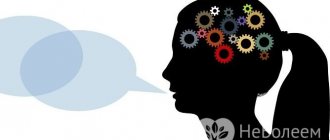Dear friends! Due to your numerous requests, we are continuing a series of programs on emergency care.
In the new episode, Viktor Plotnikov, an instructor at the Special Training Center, will tell and show an algorithm for simple actions during a convulsive attack.
We will learn what seizures are and learn how to provide first aid for generalized seizures.
Cramps are involuntary muscle contractions.
With generalized convulsions, all muscles of the body take part in a convulsive attack.
There can be many reasons for the occurrence of seizures, but in most cases the main cause is a disease such as epilepsy.
Generalized seizures may also occur with
traumatic brain injuries, cerebrovascular accidents (stroke), decreased blood glucose levels (hypoglycemic conditions), against the background of bacterial infections, poisoning, intoxication.
The algorithm for providing first aid for a convulsive attack is the same, regardless of the cause of the seizure.
general characteristics
Various convulsive syndromes rank third in terms of overall incidence in the population after cardiovascular pathology and diabetes mellitus.
They account for 20% of all neurological disorders. Pathological symptoms more often occur in children (up to 15 years) and old age. Cramps are felt as involuntary spastic contractions of skeletal muscles - individual muscle groups or the entire body - of varying intensity, short-term or long-term. They arise spontaneously or are provoked by acute pathology or the action of external factors. Severe convulsive twitching of the muscles of the limbs and torso disrupts musculoskeletal function, leading to falls and injuries. Spastic tension is painful, often accompanied by arching or turning of the body, deviation of the head and eyes to one side. Tonic-clonic seizures are manifested by disturbances of consciousness and breathing, urinary incontinence, some are preceded by focal neurological symptoms. Single episodes have a favorable prognosis, but frequent seizures disrupt habitual activity and reduce the patient’s quality of life.
First aid algorithm
First aid for an epileptic seizure is extremely important, since incorrect actions can not only not help the victim, but also worsen the situation. If someone nearby begins to show symptoms of an impending seizure, you should prepare:
- find out whether the person has had epileptic seizures before;
- If a person has epilepsy, he must immediately take the pills prescribed by the doctor to block the seizure. At the same time, people nearby should not give the patient tablets of unknown origin;
- secure your location, move to a safe, uninhabited place;
- if the situation occurs indoors, it is necessary to open windows or doors to ensure the flow of fresh air;
- the patient's head should be placed on one side to avoid choking on saliva or vomit;
- provide the patient with a fall on a soft surface, place an additional soft object under the head so that the head is higher than the body;
- remove all potentially traumatic objects;
- remove belts, necklaces, hats and all things that can squeeze, cause discomfort and make breathing difficult.
Classification
According to the mechanism of formation, convulsions are classified as rapid hyperkinesis, in the structure of which the phasic component predominates. They are divided into epileptic and non-epileptic, primary (idiopathic) and symptomatic (secondary). Depending on the nature of the predominant involvement of skeletal muscles, there are several types of convulsive contractions:
- Tonic
. Sharp and prolonged (up to several tens of seconds) muscle tension caused by the arrival of a nerve impulse of long duration. Leads to “freezing” of the limbs or body in a forced position. - Clonic
. Muscle spasms are short-term and irregular in nature, with rapid alternation of periods of contraction and relaxation. They have a locomotor effect, accompanied by motor acts. - Mixed
. Convulsive attacks characterized by a change from a tonic component to a clonic one or vice versa are called mixed. In most cases they are generalized (widespread) in nature.
Tonic spasms underlie athetosis; a type of clonic spasms is myoclonus - sudden and sharp (lasting up to a second) contractions of the flexor muscles. Based on the group of muscles affected, cramps can be flexor (flexor), extensor (extensor), or mixed. An important criterion that has found a place in the clinical classification is the prevalence of seizures, which allows us to distinguish two types of paroxysms:
- Partial (focal)
. They arise due to local activity involving a group of motor neurons. Accompanied by clonic or tonic contractions. They can be simple (without loss of consciousness), complex, secondary generalized. - Generalized
. Excitation immediately covers the entire cortex without the presence of an isolated focus, so the muscles of the entire body are involved in a seizure. Paroxysms are clonic, tonic, tonic-clonic. Myoclonic and atonic seizures are also distinguished.
Some conditions combine signs of focal and generalized paroxysms or are of an unspecified nature. In pediatric practice, afebrile and febrile convulsions, neonatal and infantile paroxysms are distinguished. The international classification for some seizures takes into account the prognosis (benign, severe).
How to spot an impending seizure
It is impossible to prevent an epileptic seizure, but you can warn others about it in advance or ask for help if you suffer from epilepsy and feel an attack coming.
First comes the tonic phase, its manifestations are convulsions, loss of control over the situation, increased salivation, etc. As a rule, due to hypertonicity of the muscles, the legs remain straight, and the arms involuntarily bend at the elbows. Breathing becomes difficult and may stop for several seconds at regular intervals. Asphyxia causes the skin to turn blue, especially the lips.
The tonic phase lasts about 30-45 seconds, after which the clonic phase begins. The clonic period is characterized by alternating muscle tension and relaxation - convulsions and convulsive states. During this period, the person twitches randomly, bends in unnatural positions, but does not come to his senses. The patient may spontaneously bite his lips or tongue, which causes blood to appear in the saliva. During the period of complete muscle relaxation, the internal sphincters also weaken, which can cause bowel or bladder emptying.
A few minutes before the onset of epileptic syndrome, the patient may suffer from restlessness, increased anxiety, and may experience hallucinations of various types. There are several types of pre-epileptic conditions, so-called auras:
- speech aura – disturbance of sensory or motor functions;
- mental aura - a sudden, unconditional feeling of sadness, melancholy, increased anxiety, panic attacks, or vice versa, a sharp surge of energy and joy;
- vegetative aura – dysfunction of the executive organs: blood vessels, secretion glands and muscles;
- sensitive aura - distortions in the sensations of external stimuli, a feeling of extreme cold or heat, a disturbance in the sensation of one’s body;
- sensory aura - changes in auditory, olfactory and visual sensations.
It is important not to panic if you notice similar symptoms in yourself or someone nearby. You should calmly warn others about this and secure your location by removing all dangerous piercing or cutting objects, and also move to a safe place where you can lie down.
The round-the-clock reception of doctors at the Yusupov Hospital will protect patients in the clinic from complications after an epileptic seizure. We pay close attention to each of our visitors, guaranteeing high-quality treatment results.
Make an appointment
Why do seizures occur?
Causes of tonic seizures
Prolonged muscle tension occurs against the background of excessive excitability of cerebral structures, in conditions of disruption of the cortical regulation of segmental functions. Very often, neurons are negatively affected by toxic, metabolic factors, and endocrine and metabolic disorders. The causes of tonic seizures are the following conditions:
- Infections
: tetanus, rabies, febrile syndrome. - Electrolyte disturbances
: hypocalcemia, hyperkalemia, hypomagnesemia. - Endocrine disorders
: hyper- and hypoglycemia, hyperinsulinism. - Hereditary metabolic diseases
: amino acid (leucinosis, phenylketonuria), carbohydrate (glycogenosis, galactosemia), lipid (Gaucher disease, Norman-Wood disease). - Cardiovascular pathology
: complete atrioventricular block, acute hypotension. - Renal and liver failure
: uremia, bilirubin encephalopathy. - Psychogenic disorders
: hyperventilation syndrome, hysteria. - Epileptic syndromes of childhood
: Lennox-Gastaut encephalopathy, Otahara encephalopathy, infantile spasms. - Intoxication
: alcohol, carbon monoxide poisoning, strychnine. - Overdose of drugs
: morphine, antipsychotics. - The effect of physical factors
: severe overheating or hypothermia, electrical injuries, the influence of radiation.
Sometimes painful spasms are of a professional nature, occurring during prolonged muscle tension in stenographers, musicians, and milkmaids. Leg cramps are common among athletes and people whose work involves standing for long periods of time. They are often observed during pregnancy, with vascular pathology of the lower extremities - varicose veins, obliterating atherosclerosis, endarteritis.
Causes of clonic seizures
Pathological impulses that provoke short-term spasms of skeletal muscles are formed in higher cortical centers, the extrapyramidal system or peripheral motor neurons. Some clonic seizures develop due to focal damage to the brain stem or spinal cord due to tumors and strokes. Other causes of such seizures include:
- Focal epileptic seizures
. - Children's infections
: measles, chickenpox, influenza, parainfluenza. - Severe myoclonic epilepsy of infancy (Dravet syndrome)
. - Diffuse damage to gray matter
: Creutzfeldt-Jakob disease, subacute sclerosing panencephalitis. - Neurodegenerative conditions
: Tay-Sachs, Alpers diseases. - Non-progressive encephalopathies
: with Down syndrome, tuberous sclerosis. - Neonatal paroxysms
: “fifth day seizures”, benign familial epilepsy. - Poisoning
: drugs (piperazine, ergotamine), chemicals (formaldehyde, arsenic).
Causes of tonic-clonic seizures
Often in the clinical picture there is a change from tonic convulsive contractions to clonic ones. Generalized mixed seizures are a typical sign of epilepsy and its severe complication - epistatus. The occurrence of paroxysmal electrical activity of brain neurons is caused by a wide range of damaging factors:
- Cerebral pathology
: vascular disorders (CVA, arteriovenous malformations, aneurysms), traumatic brain injuries, tumors. - Infectious diseases
: polio, cholera, neuroinfections (meningitis, encephalitis, abscesses). - Arterial hypertension
: renal eclampsia, convulsive form of hypertensive crisis. - Toxicoses of pregnancy
: eclampsia. - Hereditary pathology
: leukodystrophy. - Intoxication
: nicotinic, narcotic (amphetamine, cocaine), poisoning (organophosphorus compounds, oxalic acid, lead). - Overdose of medications
: caffeine, atropine, amitriptyline, etc.
What to do if an epileptic seizure has already begun?
To begin with, it is worth remembering that panic and loss of self-control are factors due to which help during an epileptic seizure may be incorrect. You need to calm down, take a breath and begin to perform the following algorithm of actions:
- record the time of onset of the attack;
- if possible, place the patient with a rolled up soft cloth or any non-hard object between the jaws to avoid biting the lips or tongue;
- record the time of the end of the attack, this will help in the future when making a diagnosis.
It is important to stay close by until the symptoms go away completely. If there is no direct threat to life and health, then it is better not to actively interfere with the course of events. Excessive activity from those who want to help can often harm further well-being.
There are a number of erroneous actions that can cause significant harm to the victim.
Diagnostics
The initial examination of the patient involves the analysis of anamnestic information (time of onset of the disease, the presence of predisposing factors) and identification of objective signs. But taking into account the polymorphism of the causes of seizures, it is not possible to establish the correct diagnosis using clinical data alone. Therefore, the patient is recommended to undergo a comprehensive examination:
- Tomography
. To identify ischemic-hemorrhagic, inflammatory foci, it is preferable to do an MRI of the brain. CT scan of the head clearly visualizes tumors, injuries and abnormalities of the skull bones, and expansion of the ventricular system. Vascular defects - malformations, thrombotic occlusion, aneurysms - are diagnosed using non-invasive CT or MR angiography of the cerebral arteries. - Electroencephalography
. The study of brain biopotentials makes it possible to identify pathological activity in the form of local or generalized discharges (peaks, sharp waves, spike-wave complexes). Violations are assessed when performing provocative tests - photostimulation, hyperventilation. For better documentation of paroxysms, it is recommended to conduct video-EEG recording with myography. - Lab tests
. The causes of some seizures are established on the basis of a blood test with the determination of biochemical parameters (electrolytes, glucose, renal, liver tests), and a toxicological study. Suspicion of an infectious etiology of epileptiform paroxysms requires serological tests (ELISA, RIF), molecular genetic analysis (PCR). Clinical and bacteriological analysis of cerebrospinal fluid is often performed.
To exclude possible cardiac pathology, an ECG is done; in case of toxicosis of pregnancy, a general urinalysis is prescribed; structural pathology of the kidneys and liver is detected by ultrasound results. Diagnosis of convulsive syndrome is carried out by a neurologist, but based on the expected etiological factors, related specialists may be involved. It is necessary to differentiate primary and symptomatic epileptic seizures, to distinguish them from other paroxysmal conditions - syncope, migraine, tremor, etc.
First aid for seizures
Signs of an epileptic seizure
The mechanics of the occurrence of epilepsy has not been precisely clarified at the moment, but it is known that seizures begin against the background of intense stimulation of areas of the cerebral cortex due to increased electrical activity of nerve endings.
Signs of an attack, as a rule, vary from person to person, but there is a certain set of symptoms that helps determine the stage of the attack and immediately proceed to first aid procedures. Such crises cause great pain and stress to the patient, so after the seizure the victim must be handled very carefully.
Signs of an epileptic seizure include:
- sudden loss of balance, falling to the ground;
- loss of consciousness;
- nausea, vomiting;
- heavy breathing;
- muscle hypertonicity;
- inseparable loud shouting;
- a sharp increase in blood pressure;
- blood from the nose;
- involuntary throwing of the head back;
- “glass eyes”;
- increased salivation, sometimes with foam;
- loss of sense of reality of the surrounding world;
- disruption of the thinking process, misunderstanding of words or shouts of strangers;
- involuntary bowel movements or urination;
- local convulsions or convulsions of the whole body;
- numbness of the limbs;
- pupils stop responding to light;
- bluishness or redness of the face and other skin;
- very rapid pulse or its strong decrease;
- convulsions.
It is quite difficult to prevent an attack, but by certain indicators you can understand its approach and take the patient to a safe place.
Expert opinion
Author: Olga Vladimirovna Boyko Neurologist, Doctor of Medical Sciences
Doctors consider epilepsy one of the most dangerous neurological pathologies. This is because a seizure can occur at any time. This increases the risk of injury. Therefore, epilepsy requires timely diagnosis and treatment. The disease occupies a leading place in the structure of disability. According to statistics, 30% of patients are disabled people of group 1 or 2. In order to reduce the risk of injury during an epileptic attack, doctors have developed special first aid recommendations. Anyone can familiarize themselves with them.Doctors at the Yusupov Hospital diagnose and treat various forms of epilepsy. Modern European CT, MRI and EEG equipment are used for examination. This medical equipment allows you to quickly determine the localization of the pathological focus. The quality of treatment depends on the accuracy of the research. An individual therapeutic plan is drawn up by experienced neurologists and epileptologists. If you follow medical recommendations for the treatment and prevention of epileptic seizures, 60-70% of patients at the Yusupov Hospital achieve long-term remission.
Treatment of seizures
Help before diagnosis
Regardless of the cause, seizures are an acute condition that requires qualified medical care. Local painful spasms can be eliminated by self-massage, pinching, or stretching the muscle. When a generalized attack develops, it is important to provide first aid to the victim: place a cushion or pillow under the head, turning it on its side, clear the mouth of foam and mucus, and provide access to fresh air. The ambulance team stops the paroxysm with anticonvulsants; in case of high fever in children, antipyretics are administered.
Conservative therapy
Hospitalization is necessary for everyone who has developed a seizure for the first time, with severe and prolonged paroxysms, or with the presence of aggravating pathology. After verification of the diagnosis, along with symptomatic correction, treatment of seizures involves eliminating the causes and influencing the main pathogenetic moments of their development. Based on the clinical situation, the following groups of medications can be used to relieve attacks and treat the underlying disease:
- Anticonvulsants
. Treatment of partial and generalized epileptic seizures is carried out with lamotrigine, carbamazepine - in monotherapy or in combination with other drugs. Convulsive syndrome in organic pathology of the central nervous system can be treated with valproate, clonazepam; in the neonatal period, the drugs of choice are phenobarbital and diphenine. Refractory epistatus requires the administration of anesthesia (sodium thiopental, propofol). - Electrolytes
. Relief of spasmophilia and hyperkalemia is carried out with calcium preparations. Chloroprivate tetany and hyponatremia are treated with sodium chloride infusions; hypomagnesemia is corrected with magnesium sulfate. To eliminate metabolic alkalosis, saline solution and potassium chloride are used. - Hypotensive
. To correct blood pressure during eclampsia, including renal eclampsia, and hypertensive crises, peripheral vasodilators (sodium nitroprusside), beta blockers (esmolol), and ganglion blockers (pentamine, arfonade) are used. Diuretics - osmotic (mannitol, urea), loop (furosemide) - help eliminate concomitant cerebral edema.
In case of poisoning, antidote, detoxification, and infusion therapy are carried out; withdrawal forms of epistatus are treated with a combination of anticonvulsants and antipsychotics. Detection of neuroinfections requires appropriate antimicrobial (antibacterial, antiviral) correction; hypoglycemia is treated with glucose, pyridoxine-dependent seizures with vitamin B6. In some cases, a high-fat ketogenic diet is recommended to relieve seizure symptoms.
Surgery
Drug-resistant variants of epilepsy are an indication for more radical treatment. Among neurosurgical interventions, resections (temporal and extratemporal, hemispherectomy), disconnection operations (subpial transsections, callosotomy), and transcranial stimulating methods are practiced. As a result, it is possible to achieve a complete cessation of attacks within a year or a significant reduction in their frequency with the achievement of adequate control.
Some symptomatic seizures are also treated surgically. In case of traumatic brain injuries and strokes, early intervention is necessary, aimed at evacuation of intracranial hematoma and decompression of cerebral structures. Abscesses and brain tumors also need to be removed. Intravascular recanalization operations - intraarterial thrombolysis, thrombectomy, angioplasty with stenting - are designed to restore blood flow in ischemic areas of brain tissue.
Provoking factors
Often, epileptic seizures occur from various “triggers” - situations that provoke an attack. This could be a bright flashing picture, a sequence of sharp sounds. There are cases where overly bright cartoon screensavers caused a negative reaction in children. The danger comes from flashing, rapidly changing images that overload sensitive systems.
If the attack is caused by just such a factor, then it is better to get rid of it at the first opportunity: turn off the TV, turn down the volume. After the attack ends, ensure that you stay in a quiet room with dim lighting. If you do not get rid of the triggers, they can provoke a series of repeated attacks, which will not be easy for the body to survive.
What not to do
Doctors talk about several actions that should never be taken if you want to help.
Firstly, under no circumstances should you leave a person alone. During the tonic phase of seizures, the patient may stop breathing due to spasm of the airways. During the clonic phase, hitting your head on something.
Secondly, it is strictly contraindicated to try to restrain a person who is convulsing. The muscles are overstrained due to contractions, and excessive pressure on the limbs or spine will not lead to anything good, but will only increase the risk of damage to the muscle fibers or joints when it comes to the limbs.
Thirdly, there is a well-established stereotype that an epileptic needs to insert something between his teeth. Usually a spoon or keys are mentioned as a suitable item. But the facial muscles are no less tense than others, so an attempt to unclench the jaws can damage the teeth and result in a fracture of the lower jaw. This measure is also fraught with injury for those who want to provide first aid: the jaws are clenched with such force that the epileptic can bite off the finger with which they want to open his mouth.
The risk that an epileptic will bite off his own tongue is a harmful lie. This is a muscle like all the others. When she is in a state of hypertonicity, the likelihood of biting or sticking her tongue tends to zero.
Fourthly, it is very important not to give any medications to an epileptic, even if some medications are found in the patient’s pockets or bag. When under stress, it is easy to miscalculate the dosage, including that of a specially prescribed drug. You can also allow a situation in which the pill ends up in the wrong throat. If the medicine does harm, the person who wants to help will face criminal liability, even if he acted with the best intentions.
At the end of the attack, especially if none have been observed before, the patient should be taken to the clinic for further examination. Qualified doctors at the Yusupov Hospital are ready to provide assistance at any time of the day. Our doctors treat each patient responsibly and attentively, carry out all manipulations and examinations based on individual indicators.
Make an appointment
What to do after an attack
After an epileptic seizure, the patient needs peace and rest, since during an attack the body depletes resources and needs to be replenished. Before the ambulance arrives, provide the victim with complete comfort and psychological support. Try to rid him of all irritants and remain calm.
An ambulance should be called only if the seizure lasts more than 3 minutes, or if it recurs. Professional help is also necessary if during an attack the patient injures himself, is injured or suffocates. After an epileptic attack, the following steps should be taken:
- put the patient on his side and let him rest for a few minutes;
- if the attack happened in a crowded place, ask everyone to move away to ensure psychological comfort for the victim;
- if a person involuntarily empties his bowels or bladder, try to clean the area and remove dirty clothes;
- notify the patient’s relatives or loved ones about what happened, especially if he is a minor or an elderly person;
- do not leave the patient for at least another 15-20 minutes, since normalization of the condition does not occur immediately. Transport the victim home if he wishes.
It is important to understand that even the correct implementation of first aid cannot guarantee the absence of the risk of developing side complications. Immediately after an epileptic seizure, the patient should be admitted to the neurology clinic of the Yusupov Hospital, where the best neurologists in the capital will determine the diagnosis and prescribe concomitant treatment. Examinations in the hospital are carried out using modern European equipment, which allows you to obtain the most accurate results. Our medical staff is ready to provide first aid in emergency situations throughout the day.
When to call an ambulance
To provide first aid for epilepsy, it is not always necessary to involve doctors. As a rule, attacks are fleeting. There are cases when compassionate citizens called the ambulance crew, but by the time they arrived they had already left the scene on their own.
In addition, for some, such situations happen several times a day. With such options, it is enough to know the basic principles of providing assistance, and if everything proceeds without complications, you can cope on your own.
In some situations, the help of medical specialists is vital for a patient with epilepsy.
The attack happened for the first time in my life
You cannot be sure how the body will react if it has not experienced such overexertion before. It is quite possible that epilepsy is manifesting itself right now (this can happen at any age). However, there is a danger that a seizure is a sign of some disease, the exacerbation of which requires the intervention of appropriately qualified specialists.
The victim is a child or elderly
The bodies of children and the elderly are most vulnerable to critical changes in health. Even if everything goes as normal, only doctors will be able to give an accurate conclusion regarding the condition of the body and further health risks.
Cramps in a pregnant woman
A neurological disease can be fatal to a child in the womb. If a woman is late in pregnancy, there is a risk of premature onset of labor.
There is a possibility of injury
During seizures, the patient may hit his head on a sharp corner or be injured during a fall. Even if it just seems to you that there is a risk of traumatic brain injury or any other injury, it is better to call specialists and keep the patient in place until the doctors arrive.
The patient remains unconscious for more than 10 minutes
It is important to check the patient’s clarity of consciousness after an attack, to find out whether he remembers his name or home address. If he does not regain consciousness on his own, there is no need to “help” him: hit him on the cheeks or splash water. It is also forbidden to try to bring people to their senses using such means as ammonia: any strong odors can provoke a second attack, which, compared to the one just suffered, can cause significant harm to health.
Epilepsy always carries the risk of irreversible changes in brain structures. If a person breathes but does not regain consciousness for more than ten minutes, it is important to organize professional medical assistance as soon as possible.
Make an appointment











